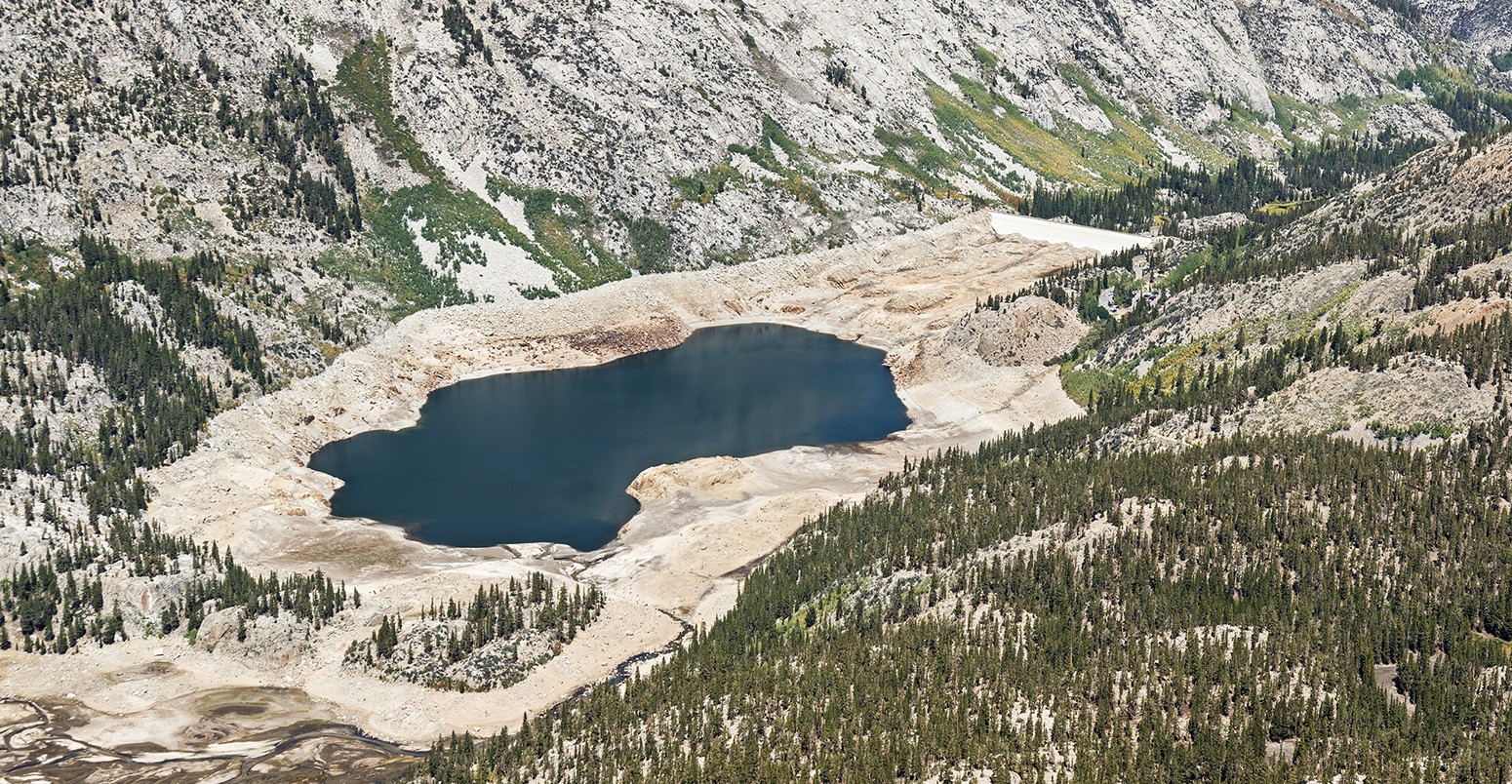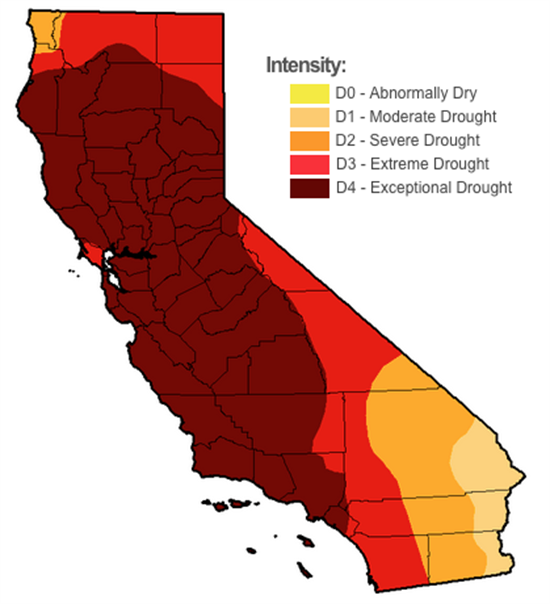
California is in drought, but is climate change to blame?
Robert McSweeney
09.29.14Robert McSweeney
29.09.2014 | 3:43pmOn the 17th January 2014, California’s Governor declared a State of Emergency. The drought that had taken hold the year before was showing no signs of abating, with rivers and reservoirs at record lows.
As the situation worsened through 2014, one question was asked again and again – to what extent was human-caused climate change playing a role? A new report out today says the evidence is inconclusive, although it says there are still questions to be explored.
‘Ridiculously Resilient Ridge’
Over 95 per cent of California is currently experiencing at least ‘severe’ drought (shown in orange in the map below), with almost 60 per cent in ‘exceptional’ drought (deep red).

Map of California drought intensity as of 23rd September 2014. National Drought Mitigation Center
The drought has affected over 37 million people across the state, with the cost of damages already hitting $2.2 billion. Agriculture has been hit hardest, with an estimated $1.5 billion in lost crops and livestock and the energy demands of pumping water from ever-retreating groundwater stores.
What’s behind the dry conditions? Scientists have identified a huge high-pressure weather system in the atmosphere, which has been sitting over the northeastern Pacific Ocean since January 2013. This system, nicknamed the ‘Ridiculously Resilient Ridge’ by a postgraduate student at Stanford University, has brought warm, dry air to California and blocked the path of winter storms that would usually deliver rain, meteorologists say.
This sort of weather system would usually last for no more a month or two. But this one has lasted over a year and a half.
As a result, California’s rainfall has dropped dramatically. For the 12 months from February 2013 to January 2014, rainfall was just 34 per cent of the average.
How far climate change is influencing the unusual ridge is proving to be a more difficult question.
Human footprint
Scientific analysis of the drought is taking place at the cutting edge of scientific research, in real time. While the amount of published literature available isn’t huge, it is building and giving scientists a better idea of what’s going on. So far, its suggests a pretty complicated picture.
A recent paper in Geophysical Research Letters had found that greenhouse gases are having a detectable influence on the intensity of the high pressure ridge, and the associated drought.
The occurrence of the ridge is linked to wind and sea surface temperature patterns in the Pacific Ocean, the study concluded. This link has grown stronger since the 1970s, which the scientists attribute to rising greenhouse gas emissions.
Further warming is likely to intensify the connection, bringing more severe droughts to California in the future, the paper notes.
But new research published today isn’t quite so categorical.
Extreme weather around the world
Today’s sees the publication of a collection of new research, published in the Bulletin of the American Meteorological Service (BAMS), looking at 16 extreme weather events in 2013.
In each case, the scientists ask whether human-caused climate change is implicated in the frequency and severity of the event.
One paper finds the conditions needed for the high-pressure ridge to form are at least four times as likely to occur in the current, warmer climate than before industrialisation.
Two other papers look for a connection with sea surface temperatures off the California coast, and find no influence of warmer temperatures on drought. Researchers found that while warmer temperatures tend to favour periods of dry weather over California, the recent drought is most likely just part of natural variability.
One of those papers actually finds that warmer temperatures cause both an increase and decrease in rainfall. While warmer conditions mean the high-pressure ridge is more likely to form and stop winter storms, it also means there’s likely to be more moisture in the atmosphere over California – which means more rain. The two events counteract each other, meaning no overall impact, the study says.
The other paper finds that while climate change is likely to have contributed to high sea surface temperatures in the northeastern Pacific Ocean, they didn’t find a significant link to the huge drop in rainfall in California.
In other words, the new scientific literature comes to a variety of different conclusions.
The global picture shows low confidence
California is just one part of the world in the grip of extreme drought. A failure of rainfall in Central and southeast Brazil has caused widespread shortages, leading to water rationing and a limits to hydropower generation.
In its Fifth Assessment Report (AR5), the Intergovernmental Panel on Climate Change (IPCC), highlighted how drought is a regional problem – it affects some parts of the world very differently from others.
Since 1951, it’s likely drought has increased in the Mediterranean and West Africa, and decreased in central North America and north-west Australia. ‘Likely’ in this context means over 66 per cent probable.
However, the IPCC attributes ‘low confidence’ to observed global trends of drought in AR5. Together with insufficient data in some regions, the AR5 concludes there is not enough evidence to say there’s been a global increase in drought since the mid-20th century.
Understanding how droughts have changed, and will change in the future as temperatures keep rising, is not straightforward. Studies about the California drought are still thin on the ground – as you might expect.
For now, scientists can’t say for certain that human activity is influencing what we’re seeing. But more data and new ways to analyse it may start to fill in some of the gaps.

